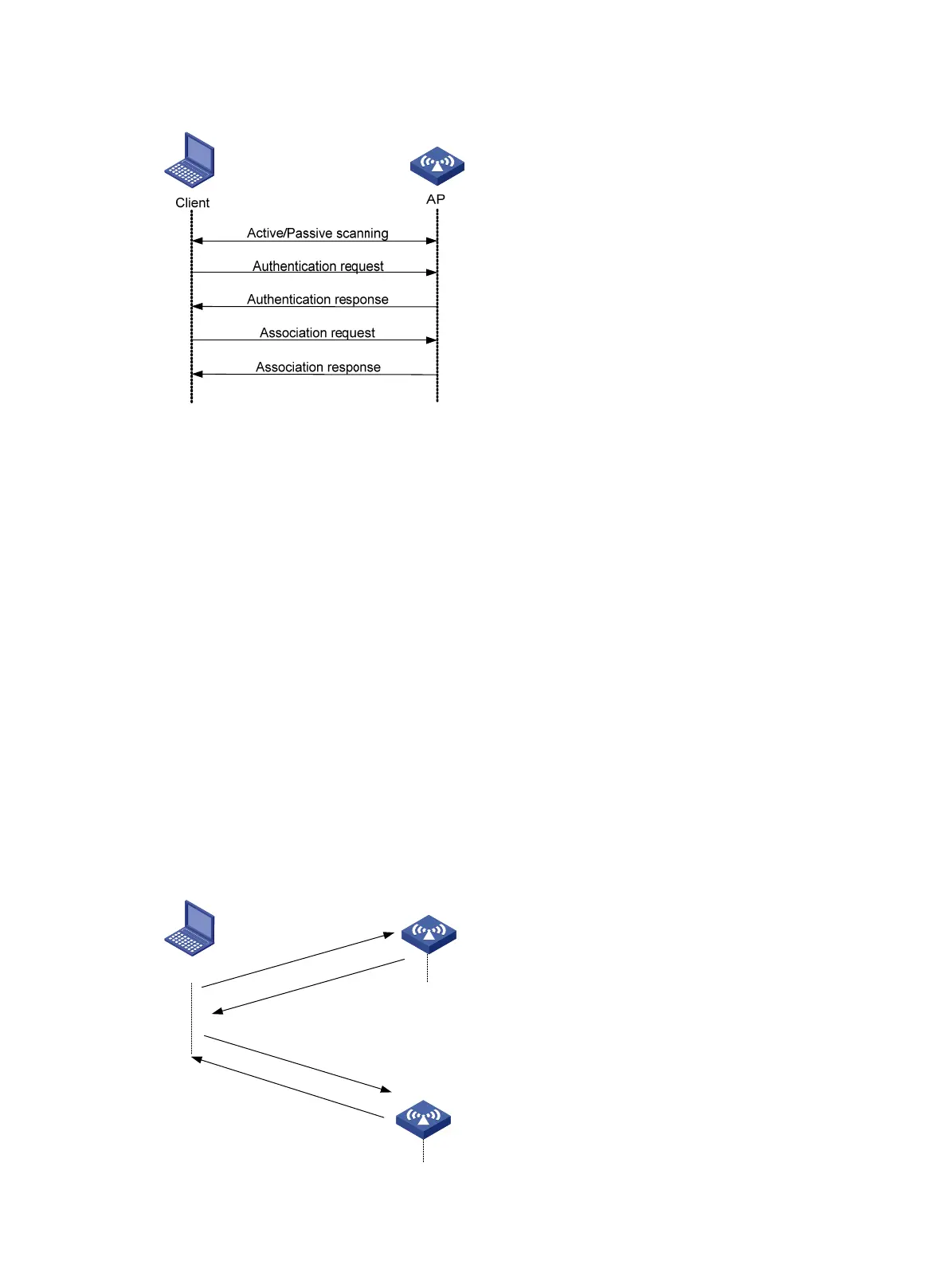256
Figure 254 Establish a client access
Scanning
A wireless client can get the surrounding wireless network information in two ways, passive scanning or
active scanning. With passive scanning, a wireless client gets wireless network information through
listening to Beacon frames sent by surrounding APs; with active scanning, a wireless actively sends a
probe request frame during scanning, and gets network information by received probe response frames.
When a wireless client operates, it usually uses both passive scanning and active scanning to get
information about surrounding wireless networks.
1. Active scanning
When a wireless client operates, it periodically searches for (that is, scans) surrounding wireless
networks. Active scanning falls into two modes according to whether a specified SSID is carried in a
probe request.
• A client sends a probe request (with the SSID null, that is, the SSID IE length is 0): The client
periodically sends a probe request frame on each of its supported channels to scan wireless
networks. APs that receive the probe request send a probe response, which carries the available
wireless network information. The client associates with the AP with the strongest signal. This active
scanning mode enables a client to actively get acquainted with the available wireless services and
select to access the proper wireless network as needed. The active scanning process of a wireless
client is as shown in Figure 255.
Figure 255 Active scanning (the SSID of
the probe request is null, that is, no SSID information is carried)
AP 2
Client
AP 1
Pr
ob
e
r
e
q
u
es
t
(
w
i
t
h
n
o
SSI
D
)
Pr
o
b
e
r
e
q
ue
s
t
(
w
i
t
h
n
o
S
SI
D
)
Pr
o
be
R
e
s
p
on
s
e
Pr
o
b
e
R
e
s
p
o
ns
e

